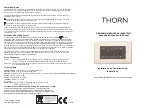
419
Configuring SSL
Overview
Secure Sockets Layer (SSL) is a cryptographic protocol that provides communication security for
TCP-based application layer protocols such as HTTP. SSL has been widely used in applications
such as e-business and online banking to provide secure data transmission over the Internet.
SSL security services
SSL provides the following security services:
•
Privacy
—SSL uses a symmetric encryption algorithm to encrypt data. It uses the asymmetric
key algorithm of RSA to encrypt the key used by the symmetric encryption algorithm. For more
information about RSA, see "
."
•
Authentication
—SSL uses certificate-based digital signatures to authenticate the SSL server
and client. The SSL server and client obtain digital certificates through PKI. For more
information about PKI and digital certificates, see "
."
•
Integrity
—SSL uses the message authentication code (MAC) to verify message integrity. It
uses a MAC algorithm and a key to transform a message of any length to a fixed-length
message. Any change to the original message will result in a change to the calculated
fixed-length message. As shown in
, the message integrity verification process is as
follows:
a.
The sender uses a MAC algorithm and a key to calculate a MAC value for a message. Then,
it appends the MAC value to the message and sends the message to the receiver.
b.
The receiver uses the same key and MAC algorithm to calculate a MAC value for the
received message, and compares it with the MAC value appended to the message.
c.
If the two MAC values match, the receiver considers the message intact. Otherwise, the
receiver considers that the message was tampered with and it discards the message.
Figure 118 MAC algorithm diagram
SSL protocol stack
The SSL protocol stack includes the following protocols:
•
SSL record protocol at the lower layer.
•
SSL handshake protocol, SSL change cipher spec protocol, and SSL alert protocol at the upper
layer.
Summary of Contents for FlexFabric 5940 SERIES
Page 251: ...238 ...
















































